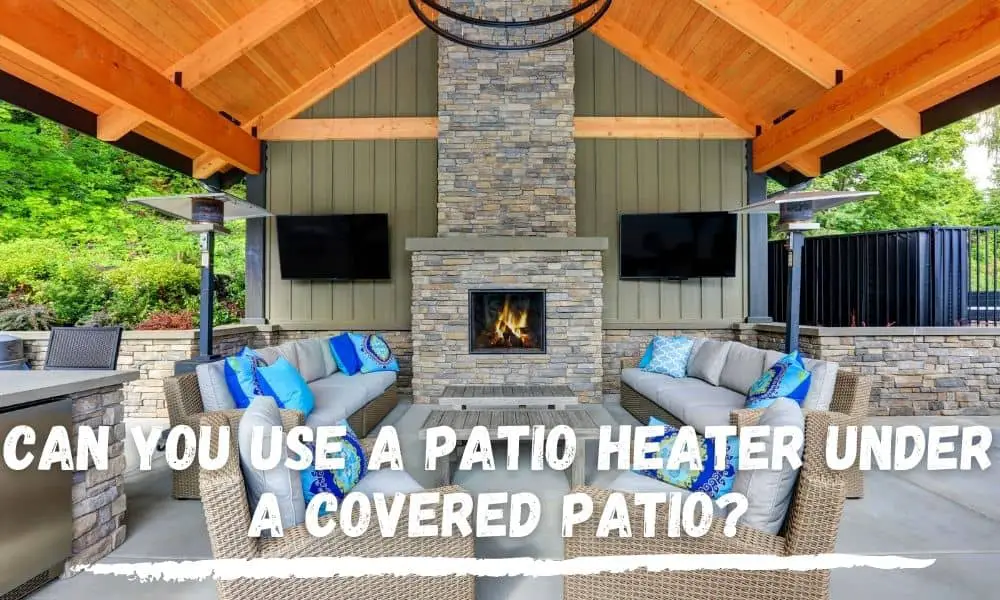There are many users who have apprehension over owning a patio heater because they think a patio heater is unsafe and presents a fire hazard.

Both propane and electrical heaters create a notion that it is not safe to have because of the many reported incidences of fire due to the incorrect use of a propane heater.
There have been reports of short-circuiting and users getting burned, which causes buyers to think twice before making a purchase.
Are patio heaters safe? The answer is yes. Patio heaters, especially well-made ones, have a safety mechanism that automatically shuts off the gas supply if the unit is tilted. There is a one-push auto shut-down button that on the device to ensure that you can turn the heater off in the case of an emergency.
The outdoor patio heater is safe depending on your concerns for safety. The product can have mechanisms that will make it safe, but it will only be secure if you follow safety guidelines on how to use it properly.
How to Use a Patio Heater Safely
Safety precautions should be part of the routine when owning an outdoor heater. The necessary steps should be taken to make sure that you do not risk burning the house down when using a heater on a patio or covered deck.
For restaurants that use propane heaters for outside dining, proper orientation of safety procedures and strictly following them is a must, as well as following a city’s fire code.
The first step to safety is to use tanks that are rust and leak-free. Before installing the tank, an inspection should be done to make sure that the tank is not rusty or the connections are all intact. The fire department should be notified when there is a smell of gas.
When the tank and the heater are successfully installed, you should follow the manual and the manufacturers’ guidelines on the proper use of the heater. The manufacturer should indicate the proper handling of the product, as well as the proper clearance between the product and a ceiling.
Very Important Safety Reminders
When using a propane heater in a restaurant or public space, a safety inspector must be assigned by management. This person is responsible for making sure that the heaters are working properly and that there are no leakages from the fittings.
The safety inspector should also know the emergency safety procedures when a heater catches on fire.
If there is an emergency, the fire inspector should take the lead in addressing the situation. At home, the safety inspector should be an adult member of the house who should regularly check the status of the heater on the deck and make sure that the tank is sealed shut when the heater is not being used.
Outdoor heaters should not be used indoors as specified by the manufacturer’s manual. Using outdoor heaters should only be used on patios, terraces, gardens, or outdoor porches or decks. This is to prevent toxic fumes from entering the home and prevent suffocation and poisoning.
Heaters that are for outdoor use, electrical or propane, are to be kept away from contact with flammable materials such as rugs, pillows, sofas, or beds. Outdoor heaters are not to be used in basements or garages, or near other gas tanks.
Outdoor heaters must be placed 300-500mm from the ceiling or partitions. Radiant panel heaters should be placed 1100mm away from walls because heat generation from heater tops and panels is intense and will likely cause a fire if put too close to walls and ceilings.
The distance will vary per the heat intensity of the product; you should check the manufacturer’s manual for this information.
As a matter of safety and for long service life, outdoor heaters should be firm on the ground. Most heaters have compartments that can be filled with water or sand to have a more stable base. The propane tank placed in the base will not be enough to provide stability.
If more reinforcement is necessary, you can use sand or water to ensure that the heater will not be knocked over by the wind. During strong winds, the heater must be stored away.
Conclusion
The heater must also be serviced every 2 years and the tanks should also be frequently serviced.
The fittings should always be secure and leak-free, and you should not delay replacing damaged gaskets or tubing.




